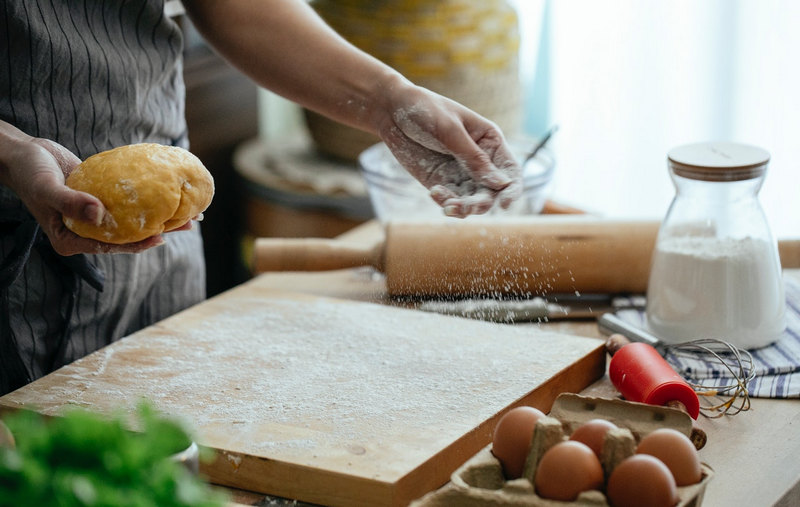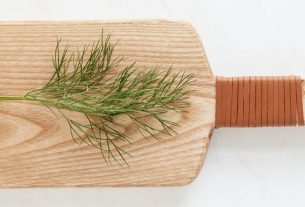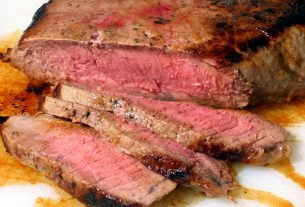Silicone and rubber are both usually used interchangeably because silicone is an example of rubber, this is the first major thing you should know concerning rubber cutting boards. You should also know that they are amazing, they are used by professional chefs and they also work well for home kitchens. Irrespective of if you love eating meat, you are a baker or a vegan, these are boards that are excellent for everything.
Rubber cutting boards should be available in every kitchen because of their versatility. We will check out our favorites, ranging from Japanese premium board to ergonomic designs and even Sani Tuff. If you are curious about why these boards are great and also how they can be maintained so that you can use them to taste, then you should keep reading this article.
Let’s check out the top 3 (three) rubber cutting boards that you should have at home:
-
Yoshihiro High-Performance Professional Grade Cutting Board
If you want the best for your home kitchen, you should be going for this cutting board. It is a professional-grade, made to meet up to the top-notch standards of the legendary Japanese sashimi chefs. Japanese chefs usually have killer blades and this board stands to hold up these blades. It means that it can last for a long time in any kitchen. Let’s check out some of its key features below:
Key features:
- The arms of the chefs are well-protected thanks to the board’s low density. It does not bounce back the same way a normal super hardboard will.
- According to the company, the board will not be damaged by knives and it will allow it to have a longer life.
- The board is made from a synthetic rubber called Hi-soft which is pressed by fabric before its desired ultra-soft texture is gotten.
-
Sani-Tuff All-Rubber Cutting Board
This is a very tough cutting board, living up to the name; Sani Tuff. This is a cutting board that will not peel, crack, or splinter and it resists bacteria more and knives work better on them. MicroStop technology is used to manufacture this board. The board is anti-microbial and it can get the approval of NSF. Let’s check some of its key features below:
Key features:
- The board does not possess juice grooves, however, it does have some impressive sizes that cover for that.
- The board is solid and thick, in an excellent way.
- If you will need it, you can resurface the board by sanding despite that rubber cutting boards generally belong to the topmost durable boards you will find out there.
-
IMEKO Ergonomic Design TPU Cutting Board
This product is not quite a cutting board and not quite a rubber. It is made from TPU which has been discovered as the link that is missing between rubber and plastic. This board has everything it should have to be considered rubber but it is flexible and super thin and it is almost classified between a board and a mat, it is kitchen-changing. Let’s check out some of its key features:
Key features:
- It resists heat up to a temperature of 300°F and it is very flexible and versatile. You could try to color-coordinate the board with your cooking and kitchen habits.
- One of its sides is juice catching grooves while the other is non-slip grooves. It will allow you to know the food and each of the juices will stay where they should.
- Almost every country across the globe are trying to grant this board their approval stamp and some of them have in mind to give it medical and food safety standard.
Why Choose A Hard Rubber Cutting Board?
Boards carved from wood cuttings are very beautiful to behold and natural materials are used to make them. However, they are quite porous and this means that bacteria could seep in on them and hang on them for some time and it could lead to poisoning of anything placed on them. You will also need to wash them with a very special cleaner and also oil them occasionally. If you do not treat them with the highest level of care, they get warped stained, and scared.
Wood could be a whole load of work. Using plastic is cheaper and easier but they peel, crack, and scar. Bacteria will be collected inside your board it has many dents and grooves from knives. The plastic board is hard on knives and it would mean that you will need to replace your knives regularly. You should invest in anything you are sure will protect your knives.
Rubber is likely not to be as cheap as plastic or as beautiful as wood, but it does have perks that help it to cover up for the downfalls of both of them. Rubber is non-porous and that means it will not allow bacteria to enter into it and it will not peel, split, or crack. It is a safer board for your knives and also for you. This also means you can use them for a long time and you will not have to replace your board often. It covers up for how expensive they are.
Because it is non-porous, the board will not absorb liquids and it means it will resist smells and stains more. Having a cutting board that smells and that has a dingy look is not good enough. You can also easily maintain them.
How To Maintain Rubber Cutting Board
Rubber cutting boards are easy to maintain, with minimal maintenance requirements. This is one of those reasons to get them. You do not need to apply oil on them like wood boards and they are mostly dishwasher friendly, your dishwasher could help you do every of the work. However, some of them may be too big for your dishwasher and you might need to hand-wash them by following the steps below:
- Use dish soap to scrub them
- Boil water and pour it over them.
The process is not labor-intensive.
How To Resurface Your Rubber Cutting Board
This depends on your type of cutting board, you can sand some of these rubber boards to bring back their previous state. First, you should put a drop cloth over your table or counter and clamp the board to your workspace. Before you begin sanding, even out the jagged edges with steel wool.
Begin with your grit sandpaper (coarse) like 25. You could then proceed with a higher one for smoother outcomes. You will get a wonderful finish if you end it with 80 grit. Anytime you switch the grit, use the steel wool to scrub the board before you change to another grit. Re-bevel the edges for sharpness once you have perfectly smoothened the board.
Don’t forget you need to use protective gloves and eye gear when you are sanding because the dust during the process could be itchy on the hands and could scratch or damage the eyes, you should be careful. Once you have finished resurfacing, wash the board several times to remove all dust. First, rinse it very well and then use steel wool to scrub it.
After then, pour dish soap into your hands and massage the board so that any dust will be gotten off it without getting collected on the sponge or dishcloth. Ensure you rinse it well and then for the last time, wash it again with another pour of soap and sponge or dishcloth.

Related Questions
Are bamboos cutting boards safe?
If you give it the correct care, you can use bamboo for cutting boards. Bamboo is not wood but grass. It is growing fast and it has been considered to be a renewable material, making it eco-friendly. Bamboo is harder as compared to wood and it is less porous. They resist bacteria more and they will not scar that easier as wood boards will. They are not non-porous, you have to ensure you do not cross-contaminate it and also ensure to thoroughly wash it after use.
What is the best wood for a cutting board?
The most common option usually used for making cutting boards is maple; sugar maple to be more specific. This is because the wood is versatile and very abundant and it is also one of those inexpensive options you will find around and with very high quality. The cutting board has a neutral grain that is fair and usually fits with any type of kitchen décor.
You could be confused about if you should get end grain or edge grain. An end grain board makes the end pieces of wood to cut into block while an edge grain board fuses different parallel wood pieces. You will get to know by the pattern on the checkerboard.
An end grain board is easier on the knife and it kind of has some abilities to self-heal because whenever it is sliced, rather than cut across your grain just like an edge grain, you will cut with your grain which will ensure the fibers spring back up into place.
Are plastic cutting boards safe?
Plastic cutting boards are very safe. They are inexpensive, durable and most are dishwasher safe. They also more importantly resist bacteria as long as there are no plenty of grooves or deep scars in them. You should consider buying a set of various colors since they are not expensive and you could use them for a variety of purposes, helping to keep your vegetables, meat, and fish very safe.


